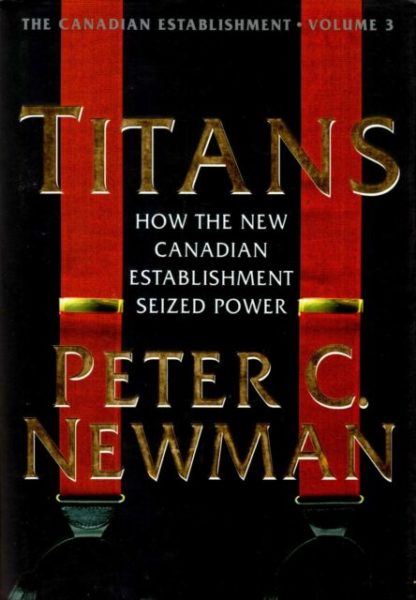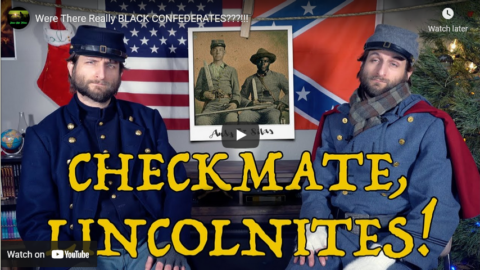Rex Krueger
Published 12 May 2021Learn how to use the chisel: the most versatile tool in your shop!
More video and exclusive content: http://www.patreon.com/rexkrueger
Affordable chisel options! (Scroll down for affiliate links)
Narex True Imperial Chisels: https://amzn.to/2SBKsYc
(My favorite affordable chisels)
Narex Metric Chisels: https://amzn.to/3uIHfUS
(Same blades; beech handles; metric widths.)
Irwin Blue Chisels: https://amzn.to/3uG0lv2
(Affordable, reliable. This is the set I use for homemade tools like my rabbet plane.)
Grebskt Chisels: https://amzn.to/3vWu6Ib
(Ultra-cheap; totally decent. I used these for my handle-making video. For the price, they’re pretty great.)———————————————————————-
Related Videos:
Buying Chisels from Home
https://youtu.be/O7oX8RfRE6cAdvanced Joiner’s Mallet
https://youtu.be/sq3K6dLaqukCutting Curves with Flat Tools
https://youtu.be/LX-0DDYRfccCheap Chisels and the London Pattern Handle
https://youtu.be/322EiA40cT4———————————————————————-
Use your chisels to make these tools!
Router Plane
https://youtu.be/-FdA0ImXjbIRabbet Plane
https://youtu.be/L1MFASOkJnYGrooving Plane
https://youtu.be/-dwBiQL1NagGet the plans for all of these and more!
https://www.rexkrueger.com/store/spec…———————————————————————-
Sign up for Fabrication First, my FREE newsletter: http://eepurl.com/gRhEVT?
———————————————————————-
Wood Work for Humans Tool List (affiliate):
*Cutting*
Gyokucho Ryoba Saw: https://amzn.to/2Z5Wmda
Dewalt Panel Saw: https://amzn.to/2HJqGmO
Suizan Dozuki Handsaw: https://amzn.to/3abRyXB
(Winner of the affordable dovetail-saw shootout.)
Spear and Jackson Tenon Saw: https://amzn.to/2zykhs6
(Needs tune-up to work well.)
Crown Tenon Saw: https://amzn.to/3l89Dut
(Works out of the box)
Carving Knife: https://amzn.to/2DkbsnM
Narex True Imperial Chisels: https://amzn.to/2EX4xls
(My favorite affordable new chisels.)
Blue-Handled Marples Chisels: https://amzn.to/2tVJARY
(I use these to make the DIY specialty planes, but I also like them for general work.)*Sharpening*
Honing Guide: https://amzn.to/2TaJEZM
Norton Coarse/Fine Oil Stone: https://amzn.to/36seh2m
Natural Arkansas Fine Oil Stone: https://amzn.to/3irDQmq
Green buffing compound: https://amzn.to/2XuUBE2*Marking and Measuring*
Stockman Knife: https://amzn.to/2Pp4bWP
(For marking and the built-in awl).
Speed Square: https://amzn.to/3gSi6jK
Stanley Marking Knife: https://amzn.to/2Ewrxo3
(Excellent, inexpensive marking knife.)
Blue Kreg measuring jig: https://amzn.to/2QTnKYd
Round-head Protractor: https://amzn.to/37fJ6oz*Drilling*
Forstner Bits: https://amzn.to/3jpBgPl
Spade Bits: https://amzn.to/2U5kvML*Work-Holding*
Orange F Clamps: https://amzn.to/2u3tp4X
Screw Clamp: https://amzn.to/3gCa5i8Get my woodturning book: http://www.rexkrueger.com/book
Follow me on Instagram: @rexkrueger
May 13, 2021
What can you do with a chisel?
Canada’s (subdued-but-real) class system
In The Line, Howard Anglin offers some observations on how Canada’s class system developed and how it can be very roughly delineated:
This comfortably flat image of our social hierarchy, however, belies a more complicated series of gradations that, while clearly marked, are rarely observed and almost never described accurately. Peter C. Newman mapped some of the terrain in his three volumes on The Canadian Establishment, but his account was already dated when he began it in 1975 and it was a work of history rather than social commentary by the time he finished in 1998. [Line editor Jen] Gerson’s own description of the Canadian class system explains why it can be hard for outsiders, and even insiders, to see it: “[W]e manage the cognitive dissonance presented by the haves and have-nots of housing,” she says, “by requiring our rich people to keep quiet. They should wear clothes that are well-cut and well-designed, but not flash. Buy the multi-millionaires car, but paint it in a sedate hue.”
Social sorting is intrinsic to human nature, perhaps even necessary — as the Bard has Ulysses remind us: “Take but degree away … and, hark, what discord follows!” — and it’s here in Canada too, if you look for it. Like the United States, Canadians early on replaced a class system based on titles with one based on the more easily-acquired currency of, well, currency. And, as in America, this immediately created a new opportunity for class to subtly reassert itself.
I used to joke that the only meaningful class division in Canada is whether you use “summer” as a noun or as a verb; lately I’ve developed the Starbucks test. In this analogy, Starbucks is Canada’s middle class, with Tim Hortons and fast food franchise coffee below, and specialty cafes and boutique chains (Matchstick, Phil & Sebastian, Bridgehead) above.
Unlike the crude measure of income, coffee choice better replicates a traditional class system because it carries an implicit sense of social solidarity, cultural assumptions and biases. During the days of the Harper government, Tim Hortons became a symbol to a certain sort of conservative as iconic as the Greek fisherman’s cap is to aging Marxists. The Maple Leaf red cup represented the honest values of rural and suburban working families, in contrast to the globalist elites with their overpriced green Starbucks. Starbucks was sipped at dog parks and served in board rooms; Tim Hortons got the job done on a cold winter morning: it was Don Cherry in a mug.
The Starbucks test is a silly heuristic, but it reveals something about the complex nature of class: an aristocrat may be penniless, and a billionaire may love his Tims. It also puts the middle class back in its traditional place as the uneasy middle-child of the social order.
In the old British system, there was pride in being working class. There was a bond of mutual support that grew out of the shared experience of hard labour and was reinforced by institutions like working men’s clubs, the British Legion, and the trade union movement. The middle-class striver with his airs and pretensions, his flash new car and his evolving accent, was a figure of general mockery, even more to the working men he left behind than to the upper classes he aspired to join. Class was about more than money; it was an identity. And there was nothing that gave you away as middle class more than worrying about being middle class — an anxiety exploited by Nancy Mitford in her tongue-in-cheek guide to “U” and “Non-U” language and behaviour. The Starbucks test reveals something similar, something more reflective of Canada’s reality than the Liberal vision of one big happy middle-class family.
Tim Worstall explained that the British middle class is still despised by the upper class and hated by the lower class. Not a model for encouraging aspirational working class folks to “move up”.
Were There Really BLACK CONFEDERATES???!!!
Atun-Shei Films
Published 24 Dec 2020Checkmate, Lincolnites! Debunking the Lost Cause myth that tens of thousands of black men served as soldiers in the Confederate army during the American Civil War.
Support Atun-Shei Films on Patreon ► https://www.patreon.com/atunsheifilms
Leave a Tip via Paypal ► https://www.paypal.me/atunsheifilms
Buy Merch ► teespring.com/stores/atun-shei-films
#CheckmateLincolnites #CivilWar #AmericanHistory
Original Music by Dillon DeRosa ► http://dillonderosa.com/
Reddit ► https://www.reddit.com/r/atunsheifilms
Twitter ► https://twitter.com/atun_shei~REFERENCES~
[1] “Black Confederate Movement ‘Demented'” (2014). AmericanForum https://youtu.be/fYFIWlGJhjM
[2] Sam Smith. “Black Confederates: Myth and Legend.” American Battlefield Trust https://www.battlefields.org/learn/ar…
[3] “25th USCT: The Sable Sons of Uncle Abe.” National Park Service https://www.nps.gov/articles/25-usct.htm
[4] Justin A. Nystrom. New Orleans After the Civil War (2010). Johns Hopkins Press, Page 20-27
[5] Kevin M. Levin. Searching for Black Confederates (2019). University of North Carolina Press, Page 45
[6] James Parton. General Butler in New Orleans (1864). Mason & Hamlin, Page 516-517
[7] Levin, Page 12-15
[8] Levin, Page 34-35
[9] Myra Chandler Sampson & Kevin M. Levin. “The Loyalty of ‘Heroic Black Confederate’ Silas Chandler” (2012). HistoryNet https://www.historynet.com/loyalty-si…
[10] Levin, Page 82-83
[11] James G. Hollandsworth, Jr. “Looking for Bob: Black Confederate Pensioners After the Civil War” (2007). The Journal of Mississippi History, Vol. LXVIX, Page 304-306
[12] Lewis H. Steiner. An Account of the Operations of the U.S. Sanitary Commission During the Campaign in Maryland, September 1862 (1862). Anson D. F. Randolph, Page 19-20
[13] Levin, Page 32-33
[14] Charles Augustus Stevens. Berdan’s United States Sharpshooters in the Army of the Potomac (1892). Price-McGill Company, Page 54-55
[15] Levin, Page 44
[16] Andy Hall. “Frederick Douglass and the ‘N*gro Regiment’ at First Manassas” (2011). Dead Confederates Blog https://deadconfederates.com/2011/07/…
[17] Jaime Amanda Martinez. “Black Confederates” (2018). Encyclopedia Virginia https://www.encyclopediavirginia.org/…
[18] Levin, Page 58-61
[19] Levin, Page 39
[20] Levin, Page 46
QotD: Blogging
A wire story consists of one voice pitched low and calm and full of institutional gravitas, blissfully unaware of its own biases or the gaping lacunae in its knowledge. Whereas blogs have a different format: Clever teaser headline that has little to do with the actual story, but sets the tone for this blog post. Breezy ad hominem slur containing the link to the entire story. Excerpt of said story, demonstrating its idiocy (or brilliance) Blogauthor’s remarks, varying from dismissive sniffs to a Tolstoi-length rebuttal. Seven comments from people piling on, disagreeing, adding a link, acting stupid, preaching to the choir, accusing choir of being Nazis, etc.
I’d say it’s a throwback to the old newspapers, the days when partisan slants covered everything from the play story to the radio listings, but this is different. The link changes everything. When someone derides or exalts a piece, the link lets you examine the thing itself without interference. TV can’t do that. Radio can’t do that. Newspapers and magazines don’t have the space. My time on the internet resembles eight hours at a coffee shop stocked with every periodical in the world — if someone says “I read something stupid” or “there was this wonderful piece in the Atlantic” then conversation stops while you read the piece and make up your own mind.
James Lileks, The Bleat, 2002-10-10.






